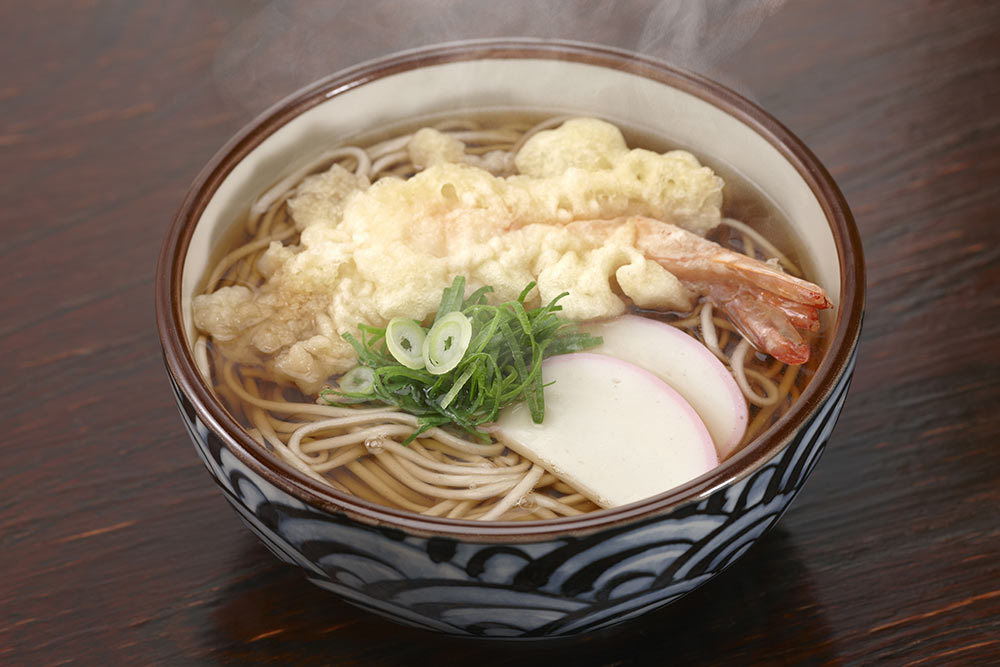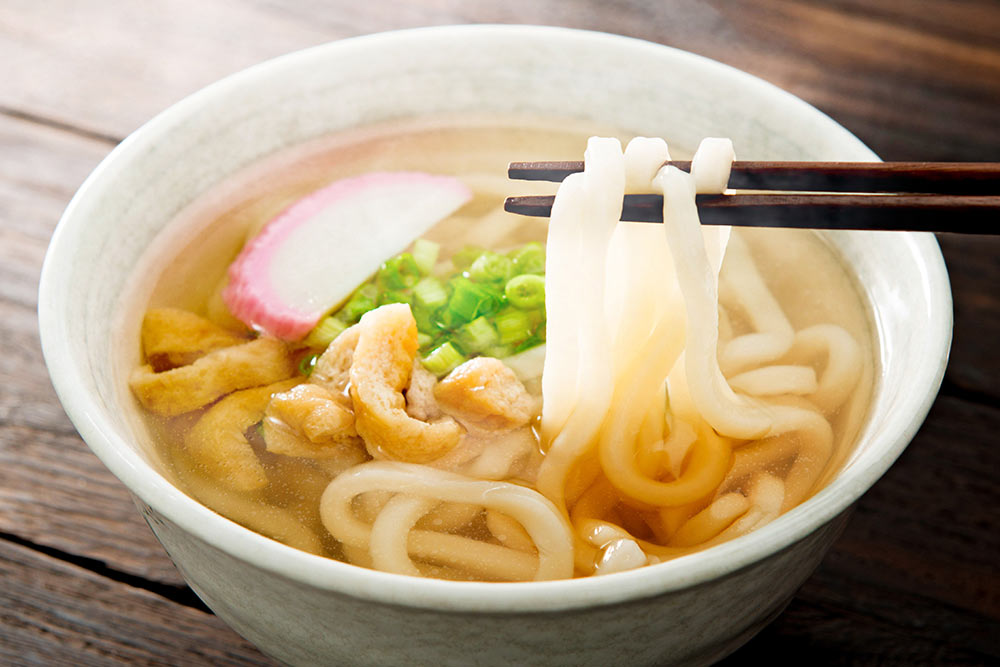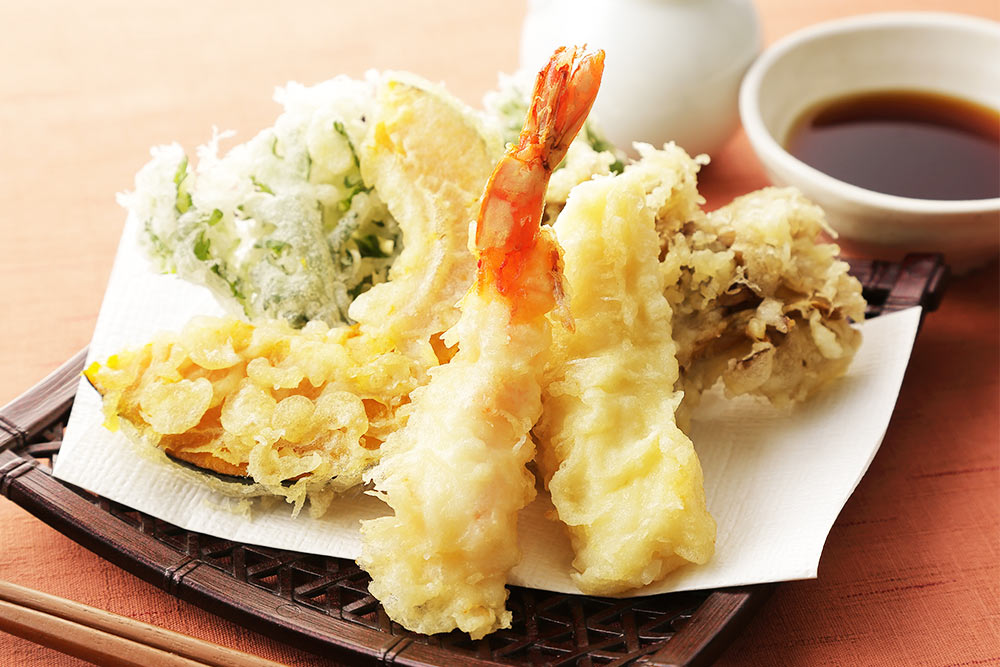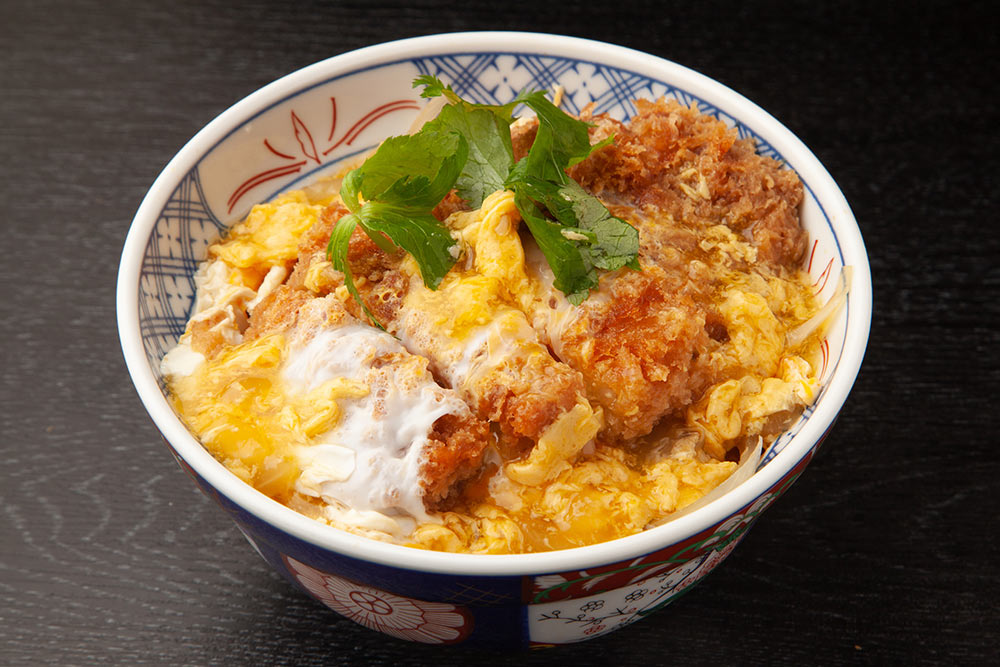When you hear “Japanese food”, what strikes your mind?
What is Japanese food?
If we were asked, as a Japanese, we would say that it is not so easy to define. There are different theories but it seems that originally it came from overseas. In the past, Japan used to be quite acceptable towards the influence of other cultures. Also when it came to food. If the food tastes good, no matter where it comes from, we will welcome it with every energy. Also, there have always been a big commitment to food.
It might seem all too overwhelming but we are going to be a little moderate here. You might not even need an explanation but…
Soba (Japanese buckwheat noodles)

It are noodles made with buckwheat flour. Depending on the quantity of buckwheat flour used, it can be found under the name of “〇% soba” (e.g. 100% soba). According to the percentage of buckwheat flower, texture and taste might differ.
It seems to be the case that the form of soba noodles we eat nowadays is relatively recent and not older than the Edo period. Up to then, it was just a chunk.
We have “hiyashi-soba”, cold soba that you immerge into dipping sauce, and “atsu-mono”, warm soba that you immerge and eat from warm dipping sauce. From main chain stores to fully-fledged soba-noodles stores, to “family restaurants”, soba noodles cannot miss on the menu. Soba noodles are a big candidate when it comes to Japanese “soul food”.
Udon

Noodle are flour-noodles, this dish is originally from continental Asia. As for soba, you can find cold and warm udon.
Udon are as popular as soba and different stores are well-furnished. Moreover, there are certain prefectures, such as Kagawa-prefecture, that are specialized in making udon noodles.
Is that due to the fact that udon do not easily stretch when soaked in the dipping sauce and they are easier to cook than soba? Finding standardized udon-menu happens more often than with soba. As for the variety of udon, we have “kitsune,” “tanuki,” “tsukimi,” and “chikara” udon… The names given, are quite funny in Japanese as they translate to “fox”, “raccoon”, “viewing the moon” (udon with egg), “strength”… That may be why udon is considered “Japanese food”.
Ramen

This Japanese food culture came about quite recently. Think of ramen as the meeting place between Japanese soup dashi, fermented products and so on. There are a lot of types of soups used for ramen-noodles bowls. Just to mention a few, soy sauce, miso, salt, tonkotsu (pork bone broth) ramen… after these, we wouldn’t be able to keep on classifying ramen… There are different ways to do that and are all very interesting, however difficult to put into practice. If you are keen on it, please look up the different classification methods for ramen.
The basic soup for ramen is made of soy sauce. A ramen bowl made with soy soup takes the name of “Chinese noodles” (Chuka-men). This is because the way of cooking ramen was original of the continent. Ever since, it has greatly developed and has acquired different flavors! It’s incredible! We are sure in the future we will find yet again new types of ramen and new soup-flavors!
Sushi

When travelers in Japan are asked what kind of Japanese food they like the most, a lot of them reply that it is sushi.
The idea that Japanese people love raw fish might come from here. There are a lot of travelers who seem skeptical at the idea of having raw fish at first, but then, once they try it, they make up their mind.
It has not been that long since people have started eating raw fish. It seems like sushi came about during the Edo period and, originally, it what we would call “fast-food” nowadays, for commoners of the time. However, it was never totally raw because the raw part could be poisoning.
Eating raw fish at first was a challenge also for our predecessors. It would be a process of passing it in vinegar and soy sauce, cooking just the surface, boiling some parts… It’s a way to kind of enjoy the food starting from when it’s raw. This is what we call “Edo-mae sushi” (Edo-style sushi). After several trials and errors and thanks to the establishment of food-channels, we got to be able to enjoy raw fish in a proper way.
Now… Sushi might seem a little bit expensive, doesn’t it? Of course, there are fully-fledged sushi restaurants that sell authentic sushi that is very tasteful and also arguably worth the price. At the same time, the idea of sushi being a type of fast food for the commoners has also long disappeared and it has become easy to consume sushi.
There is a fantastic type of restaurant called “kaiten-zushi”, where sushi keep rotating around a table and you can get what you like. It is great fun to go there, we would say. Besides the taste, there are other charming aspects of sushi. One of them is the great variety of sushi and the way they look. The “kaiten-zushi” (rotating sushi) is a place where you can enjoy both these aspects. We won’t go too much into detail, but the “kaiten-zushi” has definitely a lot of charming aspects that can differ from when you go to a normal sushi restaurant. If it is something new for you, give it a try!
When it comes to sushi preparation, there is usually a “seasonal ingredient” (called “neta”) that comes into play and it makes the difference. Do ask at the restaurant, as it is a joy to know and try sushi that have a seasonal touch!
Tempura

On the same line as sushi, tempura stands amongst the most popular types of Japanese food for visitors from overseas. Nowadays tempura used to be a local dish of Edo. To put it simple, tempura is something (vegetables, fish etc.) that is coated in flour and then fried in oil. Once upon a time, the type of flour used was rice flour. Today, it is just one of many possibilities. There are different ways of coating, so try to observe…
It is actually not so easy to make tasteful tempura, as you need to pay attention on the ingredients you want to use to coat, called tane (seeds). Then, texture differs from tempura to tempura, as well as the amount of water used. Subtle differences in the power of the heat will also determine the taste, the fragrance and the texture. So the thought behind the type of “coating” is extremely important.
Of course, a “seasonal element” is also added to the coat. Seafood, vegetables and even wild plants are often used so try out everything if you can! You will be amazed!
Donburi-mono (Rice bowl dish)

This refers to a dish in a bowl of rice that could potentially be served in a different bowl but it seems that for the ingredients used, a rice bowl is more appropriate… Let me try to give it a rough explanation.
There are different kinds of “donburi-mono” rice bowl dishes. If you put something onto the rice, you could already call it a rice bowl meal.
It is not an easy task even to define what comes in a normal rice bowl dish. However, we can surely say that there are some elements that characterize donburi-mono. The first thing is that ingredients that match well with rice should be put on top of the rice bowl. As a matter of course, everyone has their own preference, and there is no defined matching criteria.
Japanese rice is really tasty. It has become harder and harder to say that rice is the only main dish in Japan, however this does not change the taste. Tasteful rice is what allows you to enjoy even more the food on top of the rice bowl. This is what “donburi-mono” is about. Standard rice bowl dishes are simply that: nice rice with something on top.
So, let us introduce some of the classics.
♪ Beef bowl, pork bowl, chicken bowl, tempura bowl, oyakodon (chicken and egg on rice), egg bowl, bowl of eel and rice, pork cutlet bowl, Tekka-bowl (vinegared rice topped with sliced raw tuna), young sardines bowl, sea urchin bowl, fish-eggs bowl, salmon bowl. (~♪ these mentioned have seasoned rice and fish flavour…)
Cutlet bowl, stamina bowl, avocado bowl, steak bowl, roast beef bowl (~♪ these are all meat-flavoured…)
Shrimp and egg cutlet bowl, fried shrimp bowl, mixed vegetable and seafood tempura, stewed pork, curry bowl (~♪ the number of dishes keeps increasing…)
Ok… let’s stop the music!
One last interesting thing. “Oyako-don” (mentioned above), literally means parent and child. It is the name given to the bowl of rice with chicken and egg used as ingredients. To revise, “oya” means “parent”, “ko” means “child” and “don” is the abbreviation of “donburi-mono”, the rice bowl dish. Also the combination of salmon and fish-eggs is called “oyako-don” .
A rice bowl that has pork and eggs (instead of chicken and eggs, that would be the oyako-don explained above), is called “Tanin-don”, which literally means “the other person’s rice bowl”.
Smile.
What else shall we say…?
Hot Topics
All Lists使用言語を選択してください。




